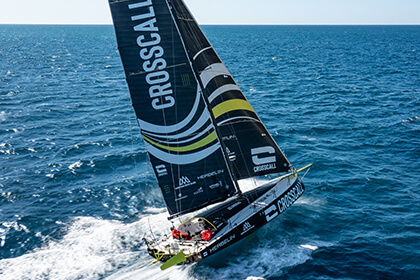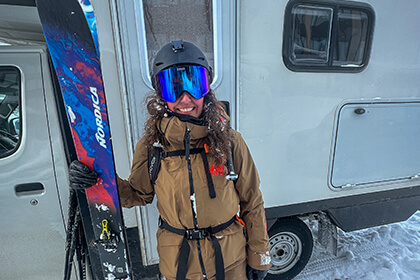
October 21, 2025 10 min read
How to plan your ski trip to Japan
Skiing Japan with Nat Segal: Hokkaido RV adventure, volcano tours, and how to thrive through a dry spell.
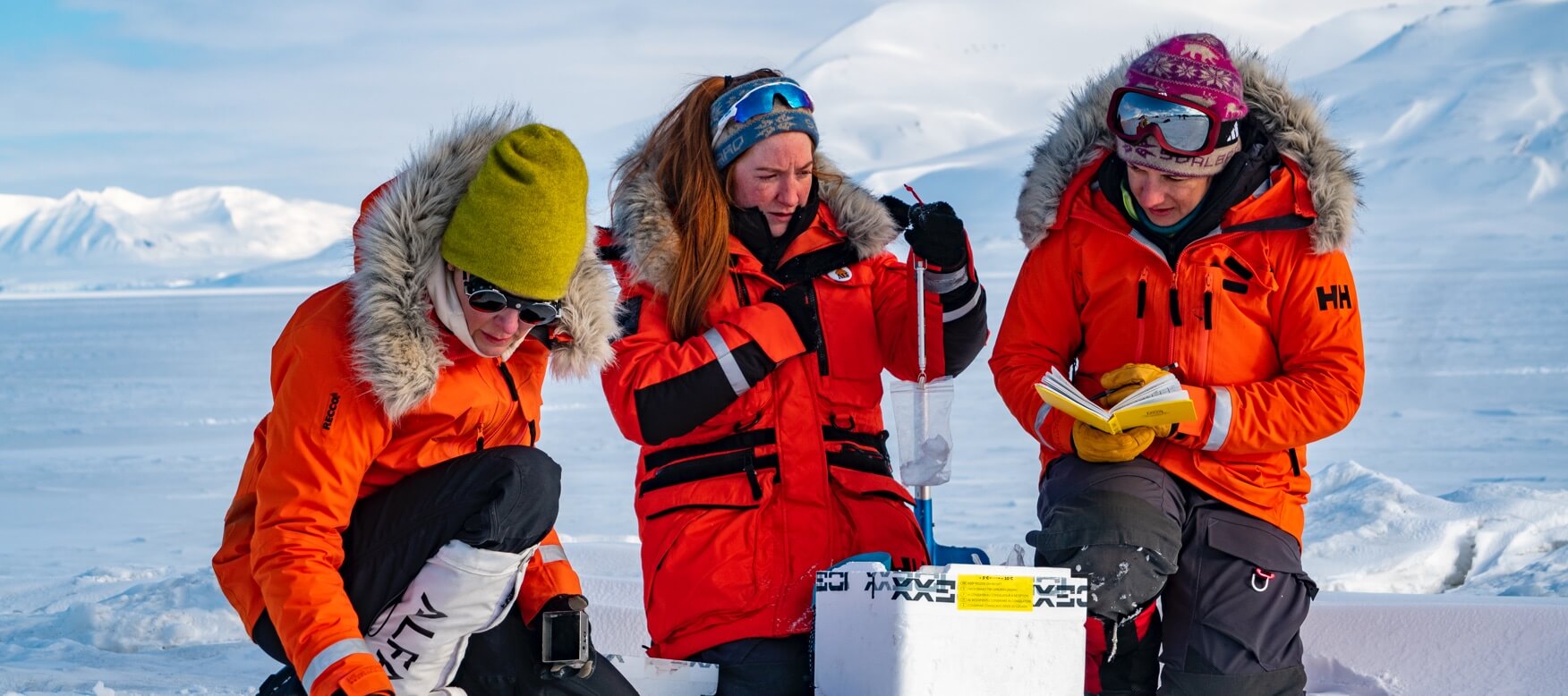
450km on skis in the wild Arctic to unlock the secrets of dark snow
December 15, 2021
5 min read
Climate sentinels is an expedition that took place in Svalbard in April 2021 with the goal of improving our understanding of what makes the Arctic warm so quickly, while also demonstrating that research expeditions can be done more consciously.
The Climate Sentinels team is made up of 6 female scientists, all experts of the polar regions, and four of them took part in the expedition: Dr. Silje Smith-Johnsen, Dr. Anne Elinka Flink, Dr. Nina Adjanin, and Dr. Heïdi Sevestre.
The goal of this expedition was to improve our understanding of what makes the Arctic warm so quickly and at the same time, prove that research projects also can be conducted in a more sustainable way: On their skis, the scientists pulled their equipment on sleds, covering a distance of 450 km from Ny-Ålesund to Hornsund, collecting 100 snow samples along the way.
We spoke with Dr. Heïdi Sevestre to learn more about the expedition and the challenges they faced in the Arctic.
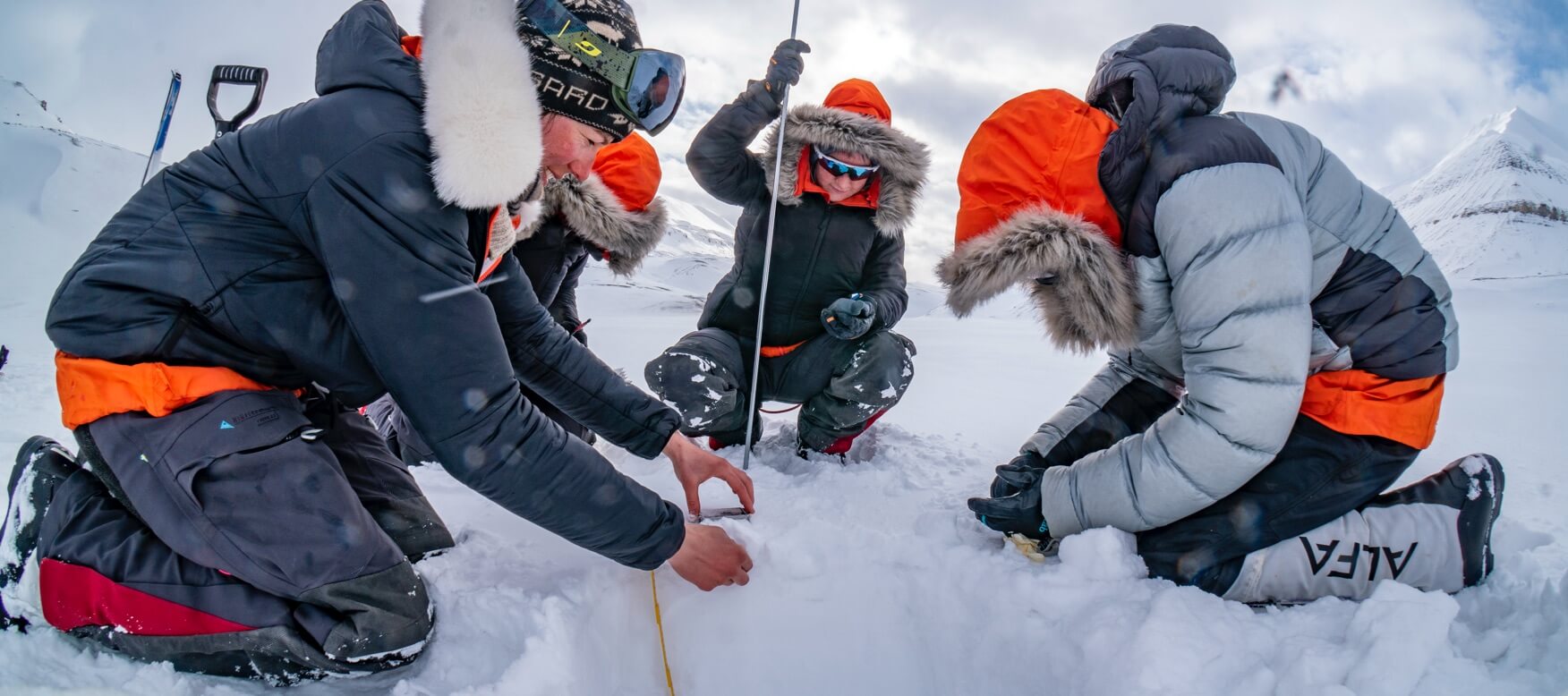
In Svalbard, we investigated the deposition of black carbon on snow. Black carbon is made of fine and ultrafine particles that are emitted every time we burn fossil fuels. These small particles can travel over long distances, sometimes thousands of kilometers. And through winds and snowfall, they can then deposit on snow and ice, which darkens those white surfaces and catalyzes their melt.
Today, the deposition of black carbon is said to be responsible for 30% of the warming of the Arctic. During our expedition, we collected snow samples between 2 research stations, along a transect from the North West of Svalbard to its southern end. Overall, we collected 100 snow samples, which will be analyzed at Western Washington University and will help us to better understand the nature of the fossil fuel that has burnt in the first place. As well as where the deposits came from geographically.
Svalbard is the place that is warming the fastest on earth. While the Arctic is warming two to three times faster than the rest of the world, Svalbard is warming close to 7 times faster. So, everything that is happening in Svalbard is happening extremely rapidly, and for us, it was essential to better understand why this is the case, and also where the pollution that is darkening the snow and ice in Svalbard is coming from.
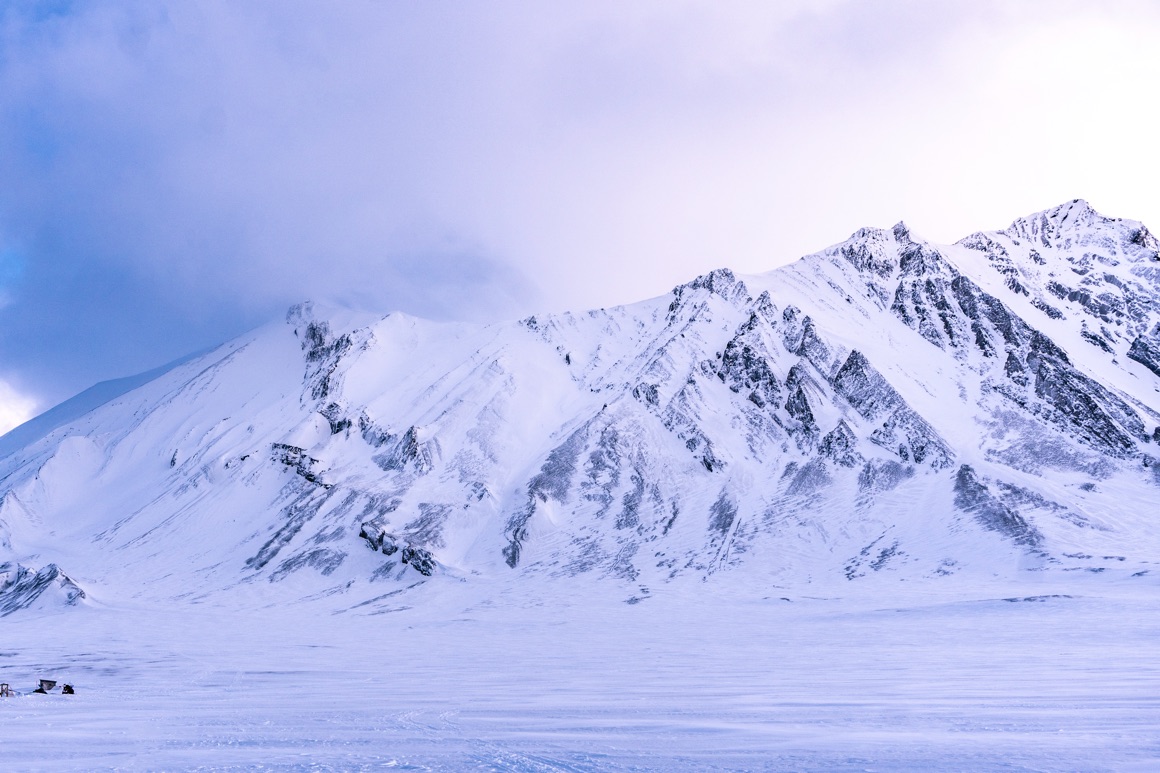
Yes, we were able to make observations that will be very helpful to our study. For the first two weeks of the expedition, we experienced some of the most extreme weather conditions we have ever seen in Svalbard during that time of the year. What we experienced was historically extreme in the sense that we had to survive 4–5 major storms that brought crazy winds up to 140 kilometers per hour, huge amounts of fresh snow that made our survival pretty tricky. Not only did the winds threaten to blow up our tents every night, but they were also strong enough to flip our pulks. There was also the real possibility that there would be enough snow to create the worst avalanche risk I've ever seen in Svalbard. The temperatures were also quite high so the sea ice was not in the best condition, and some of the glaciers were more crevassed than we expected.
We know today that these extreme weather events are directly related to climate change, and so we experienced the impacts of such extremes first-hand during the expedition.
Truly what shocked us the most were these insane weather conditions. This is something that is so unusual for the month of April – which is typically characterized by high-pressure systems, and good, stable weather. And what we experienced was the complete opposite.
Besides that, I think we were all shocked by the shape of the glaciers. The maps we were using to situate ourselves were about 10 years old. And every time we climbed or traversed new glaciers they looked so different from what they were supposed to look like on the map. The glaciers were deflated or very steep in parts, and moraines, material left behind by a moving glacier, were extremely steep too. They were so hard for us to traverse that every time we had to ski over glaciers we knew it would take us so much more time than we anticipated.
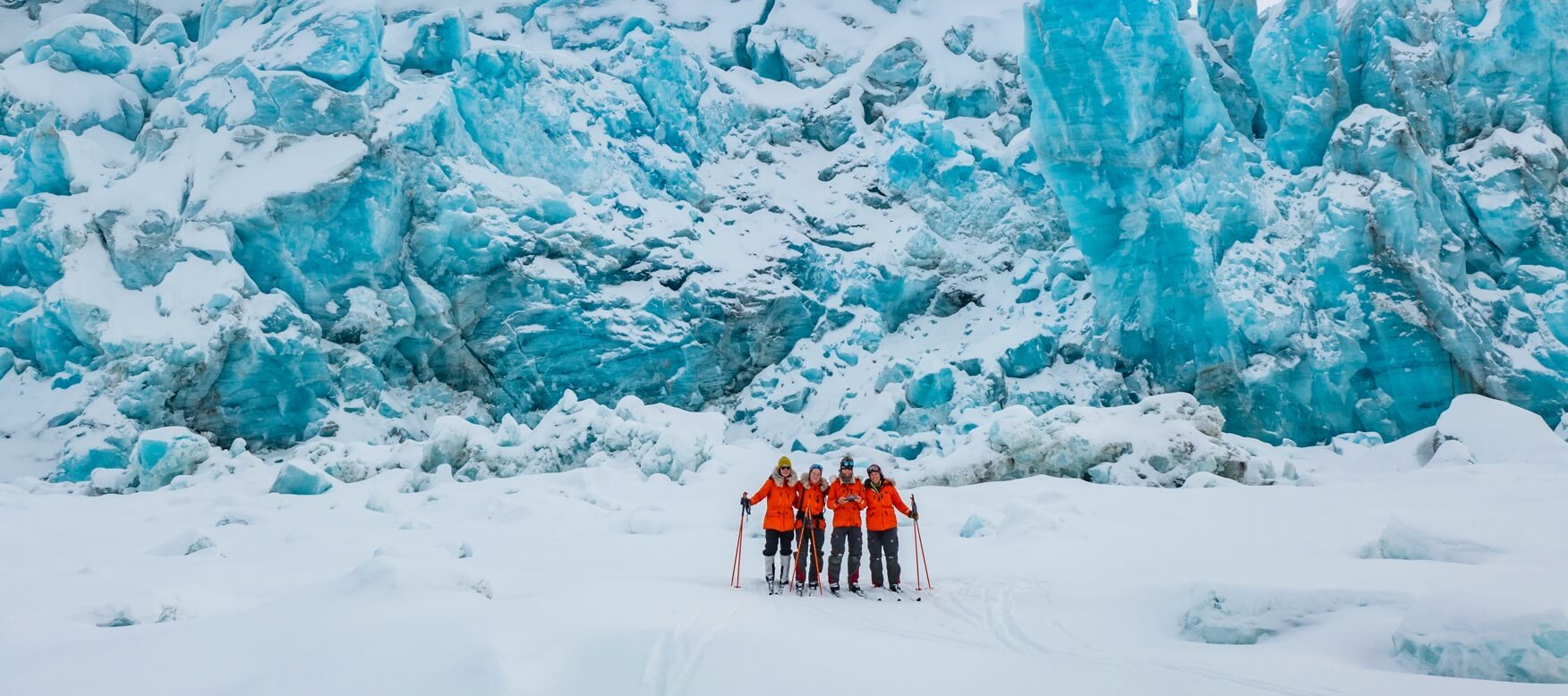
For us, it was very important to demonstrate that science can be done differently – even in the most extreme environments on earth. As scientists working at the forefront of climate change, we cannot keep traveling across the polar regions using helicopters, ice breakers, and snow machines. It is truly our responsibility and our duty to minimize all our carbon footprints.
This is why we decided to travel on skis pulling all our equipment behind us in a sled called a pulka. Traveling using muscle power only is definitely not the easiest strategy, as we quickly understood, but at least it helped us to further respect the environment we were studying and to fully take the time to observe and analyze the ecosystem and the conditions we were going through.

It was crucial to trust in each other. One thing we have all learned on previous expeditions is that because you’re spending so much energy to move and survive out there, it's very important to put your focus on the things you can control and not the things you can’t control. So firstly, you have to be confident that the whole team can handle these harsh environments. Everything around you is so much more powerful, so much more chaotic, but you can never give up.
Secondly, it was very important to make sure that we didn’t mistake confidence with ego. To never think we were stronger than the environment or our teammates. We recognized that each of us was a different character and brought different expertise to the group, and we had a very open communication strategy. So, we aimed to put egos aside, and always told if we were scared, tired, hungry, thirsty, disagreed on something, or had a gut feeling about something — and it was important to listen to those feelings.
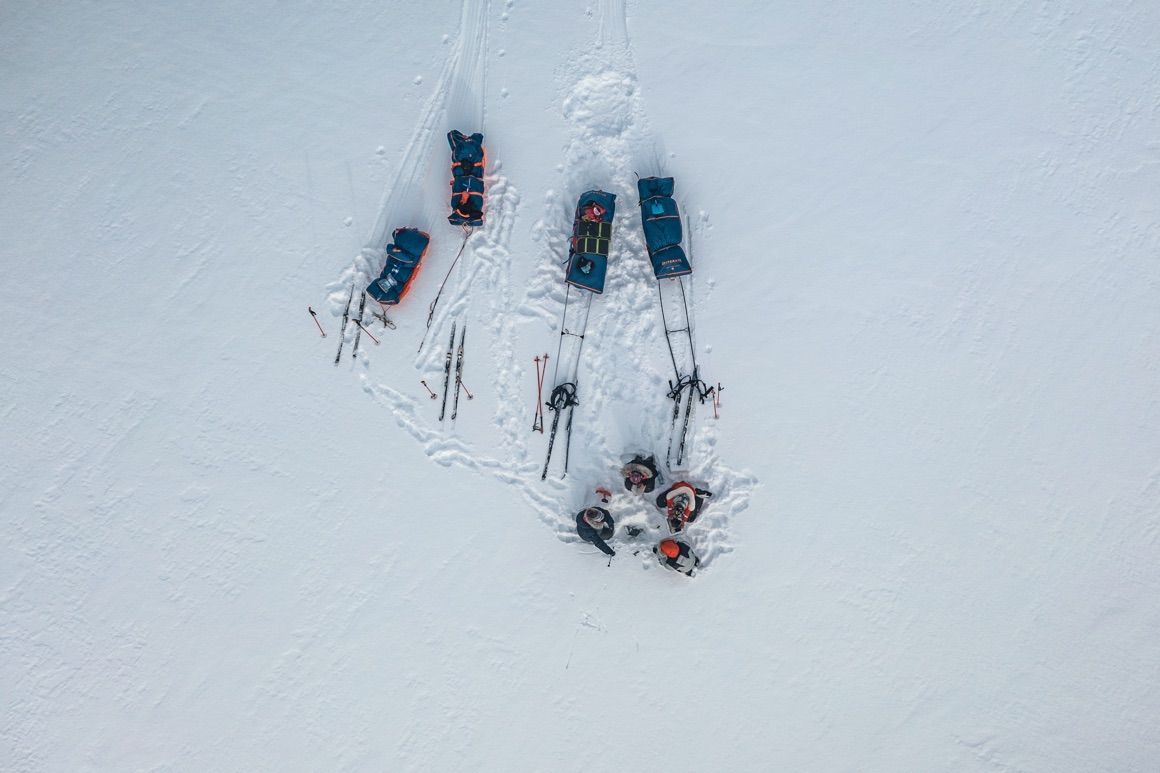
Helly Hansen helped keep the Climate Sentinels safe and protected in such severe conditions, with the Arctic Patrol gear, designed for people who live and work in extreme cold-weather climates. This helped the team to focus on investigating why the Arctic is warming and changing so rapidly, because these changes affect us in return even in Europe, Asia or America. So whatever happens to the Arctic today, because of our activities, is, in turn, impacting our economies, our society, our borders, and our way of life.

October 21, 2025 10 min read
Skiing Japan with Nat Segal: Hokkaido RV adventure, volcano tours, and how to thrive through a dry spell.
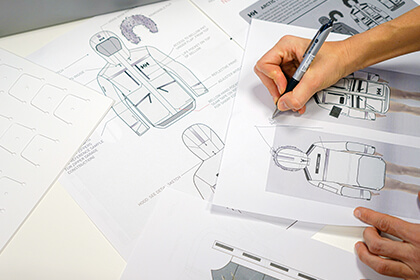
September 29, 2025 4 min read
An inside look at how Helly Hansen designed the Arctic Patrol Down Parka with insights from Arctic scientists for extreme conditions.
